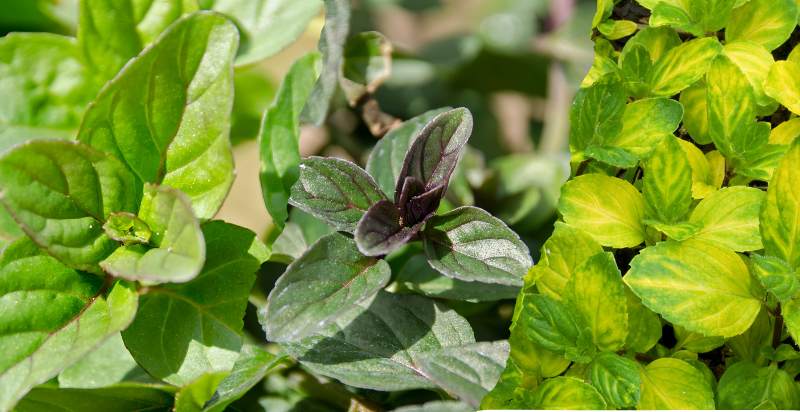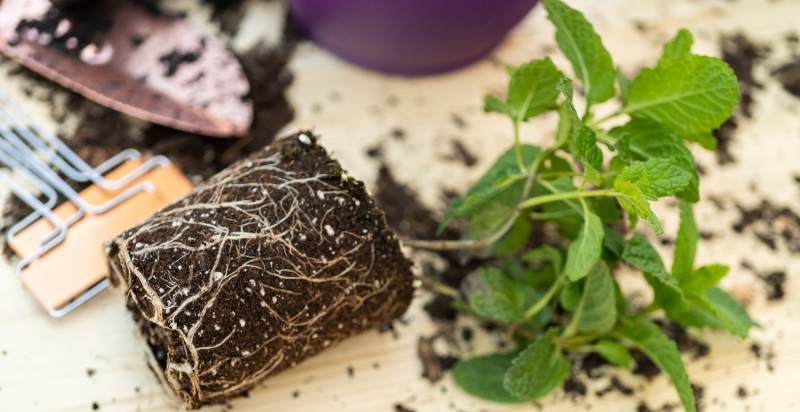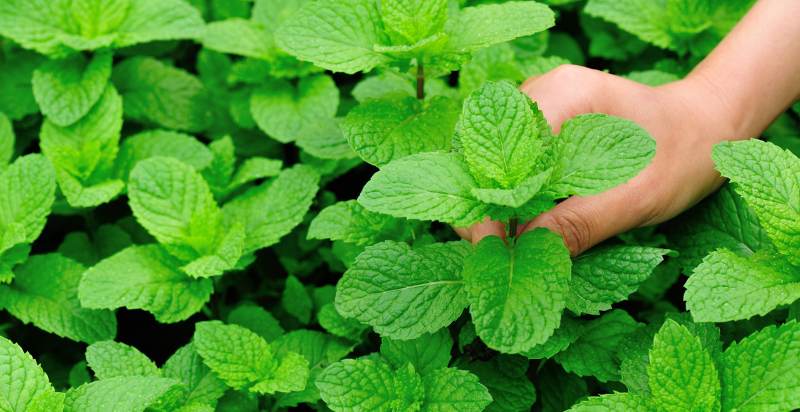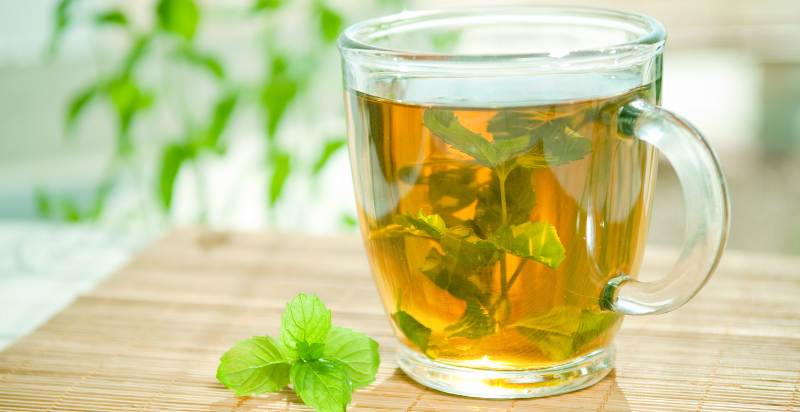Mint plants have been used for centuries as herbs, spices, and medicinal ingredients. They add flavor to dishes, soothe sore throats and even repel insects. Mint is a low-maintenance plant that can be grown indoors or out and come in several varieties, each with its unique aroma and flavor.
In this article, we’ll take a closer look at these versatile herbs with information about growing mint plants, harvesting mint leaves, and some recipes featuring the refreshing taste of mint.
What is Mint?
Mint is a type of herb from the Lamiaceae or Labiatae family. Mint plants are aromatic, and some varieties have highly scented leaves that can be used to flavor food, drinks, and other products. Most species of mint are perennial, meaning they grow back year after year with very little care.
Types of Mint Plants:
Many different types of mint plants are available, each with its unique aroma and flavor. The most popular varieties include peppermint (Mentha piperita), spearmint (Mentha spicata), and apple mint (Mentha suaveolens). Other types include:
- Orange mint (Mentha x piperita citrata).
- Chocolate mint (Mentha x piperita ‘Chocolate’).
- Ginger mint (Mentha x gracilis).

History of Mint Plants:
Mint has been used for centuries as an herb, spice, and medicinal ingredient. Ancient Egyptians used mint in cooking, while Greeks believed it had purifying powers. In the Middle Ages, Europeans used mint to flavor food and drinks. Today, it’s popular in many cuisines worldwide and is included in products such as toothpaste, mouthwash, and soap due to its refreshing scent.
Nutrition of Mint Plants:
Mint leaves are a good source of vitamins and minerals, particularly vitamins A and C. They also contain beneficial antioxidants such as phenolic acids and flavonoids, which can help reduce inflammation in the body. Additionally, mint is a great source of dietary fiber, which helps keep you feeling full longer and can aid digestion.
Health Benefits of Mint Plants:
Mint has been used for centuries as a medicinal herb and is known to have many health benefits. It can help relieve digestive issues, reduce inflammation, improve respiratory function, promote skin health, and even fight off bad breath. Additionally, mint may also help reduce stress levels and improve mental clarity.
How to Plant Mint Plants?
Mint is a popular herb used for flavoring dishes and drinks. Mint has been around since ancient times, and it’s easy to grow at home. With the right care and attention, your mint plants can provide fresh leaves all season long! This guide will show you how to plant mints in your garden or container.
Step 1: Choose Your Location
Mint plants do best when grown in full sun but also tolerate partial shade if necessary. When choosing your location, ensure it’s well-drained; otherwise, your plant may suffer from root rot. Pick an area that isn’t prone to strong winds or heavy rains, as these can damage the delicate leaves.

Step 2: Prepare the Soil
Mint prefers moist, rich soil with plenty of organic matter. Before planting, add some compost or manure to the area and mix it into the existing soil. This will help ensure that your plant can access all the nutrients it needs for healthy growth. You can also consider adding some fertilizer for an extra boost.
Step 3: Plant Your Mint
When you’re ready to plant your mint, dig a hole slightly larger than the root ball of your plant and place it in the ground. Make sure that the base of the stem is level with the ground so that water can reach its roots evenly. Water your new mint plants thoroughly and mulch around them to help retain moisture.
Step 4: Care and Maintenance
Mint needs regular watering to stay healthy and productive; aim for 1-2 inches of water per week from rainfall or your garden hose. You may also want to add a layer of organic fertilizer every few weeks during the growing season. Monitor your plants regularly for signs of pests such as aphids, slugs, snails, and caterpillars.
If you spot any, take appropriate measures to control them before they damage your mint plants. Finally, trim off any flowers that appear in late summer or early fall so that all the energy goes into producing leaves instead.
How To Care For Mint Plant?
Mint is a very hardy plant, but it still needs consistent care to stay healthy. Here are some tips on how to take care of your mint plants:
- Water your mint plants deeply once a week or more if the soil feels dry.
- Fertilize your plants with an all-purpose fertilizer every few weeks during the growing season for optimal growth.
- Trim off any flowers that appear in late summer or early fall so that all the energy goes into producing leaves instead.
- Monitor your plants regularly for signs of pests and diseases and act quickly if you spot any.
- Mulch around the plant to help retain moisture and reduce weeds.
- Divide your plants every couple of years to ensure they don’t become too crowded.
- Keep the soil moist but not soggy; never allow it to dry out completely.
These tips should help you get the most out of your mint plants and keep them looking their best! With proper care, your mint plants will provide you with a fresh supply of leaves all season long. Enjoy!
Preventions From Pests And Diseases:
Mint is a hardy plant, but it can still be affected by pests and diseases. Here are some tips to help prevent pests and diseases from damaging your mint plants:
- Plant your mint in an area with good air circulation to discourage fungal infections.
- Make sure the soil you use is well-drained; soggy soil can encourage root rot.
- Remove any dead or diseased leaves promptly to avoid spreading the infection.
- Monitor your plants regularly for signs of pests and act quickly if you spot any. Common culprits include aphids, slugs, snails, and caterpillars.
- Cover your container-grown plants with netting or row covers to protect them from pests.
- Prune your plants regularly to keep them compact and healthy.
- Keep weeds away from your mint plants, as they can harbor pests or diseases.
How To Harvest Mint?
Mint is a versatile herb used in many dishes, teas, and beverages. When it comes time to harvest your mint, you’ll want to ensure you do it correctly, so you don’t damage the plant. Here’s how:
- Clip off small amounts of leaves from the stem as needed.
- Start harvesting your mint when it reaches six inches tall or when buds begin to form on stems.
- Don’t take more than one-third of each stem during any harvest session; this will help ensure that your plant continues producing leaves for months.
- Harvest early in the morning after the dew has dried but before temperatures have gotten too hot. This is when the oil content of the leaves is at its highest.
- Always use clean, sharp scissors or pruners when harvesting to avoid damaging the plant.
- Don’t harvest if your mint plants look wilted or stressed; wait until they have recovered before taking any leaves.

How To Store Homegrown Mint?
Once you’ve harvested your mind, you’ll want to store it properly, so it stays fresh for as long as possible. Here’s how:
- Place the leaves in a paper towel and gently roll them up.
- Put the rolled-up leaves into an airtight container or plastic bag and store them in the refrigerator.
- The leaves can last up to two weeks if stored properly.
- You can also dry the leaves by placing them on a baking sheet lined with parchment paper and storing them in an airtight container or freezer bag once they have cooled completely. Dried leaves will keep for up to six months.
- Alternatively, you can freeze the leaves by placing them in an airtight container or freezer bag and storing them in the freezer for up to one year.
Following these simple tips, you can enjoy freshly harvested mint all season long! Enjoy!
How To Use Mint?
Mint can be used in a variety of ways. Fresh leaves can add flavor to salads, teas, sauces, and more. Dried leaves can also be used in baking and cooking or as an herbal remedy for indigestion and nausea. Here are some ideas for how to use your homegrown mint:
- Add fresh mint leaves to your favorite summer drinks or cocktails.
- Make tea with dried mint leaves to help ease digestion after a meal.
- Make a refreshing Mojito by muddling fresh mint leaves with lime juice, sugar, and soda water.
- Use dried mint leaves in soups and stews for extra flavor.
- Freshen up your fruit salad with a few sprigs of freshly picked mint.
- Add a handful of fresh or dried mint leaves to your favorite smoothie recipe.
- Sprinkle dried mint leaves on top of Greek yogurt and honey for a delicious snack.
- Use fresh mint as a garnish for desserts such as ice cream, cheesecake, or apple pie.
- Make homemade pesto using fresh basil, garlic, and mint. Enjoy!
There are many ways to use your homegrown mint; the possibilities are endless! Enjoy experimenting with different recipes and combinations to find what works best. Happy cooking!

Risks From Mint:
Mint is generally considered safe for consumption, with few risks or side effects. However, there are a few things to keep in mind when using mint:
- Mint may cause allergic reactions in some individuals; if you experience any symptoms after consuming mint, discontinue use and seek medical advice.
- If you have an existing health condition such as asthma or heartburn, consult your doctor before adding large amounts of mint to your diet.
- Be aware that excessive consumption of fresh or dried mint leaves can be toxic; always stick to recommended serving sizes.
- If pregnant or breastfeeding, speak to your doctor before consuming large amounts of fresh or dried mint leaves.
- Avoid taking any form of mint if you take certain medications, such as anticoagulants or diabetes medication.
- Make sure to store fresh mint properly in the refrigerator and away from direct heat sources.
Conclusion:
Mint is a versatile herb used in cooking, baking, and even as an herbal remedy. When harvesting or storing mint, follow the instructions above to ensure it lasts as long as possible. Also, consider the potential risks of consuming large amounts of mint and consult your doctor if you have any existing health conditions before using it. With these tips in mind, you’ll be able to enjoy freshly harvested homegrown mint all season long! Enjoy!
- Everything You Wanted to Know About Red Tamarillos - June 2, 2025
- A Guide to Tulips: Everything You Need to Know & More… - June 2, 2025
- Guanabana: Description, Flavor, Benefits, And Uses - May 27, 2025

14 thoughts on “Planting, Growing, And Harvesting Mint Plants ”
Comments are closed.